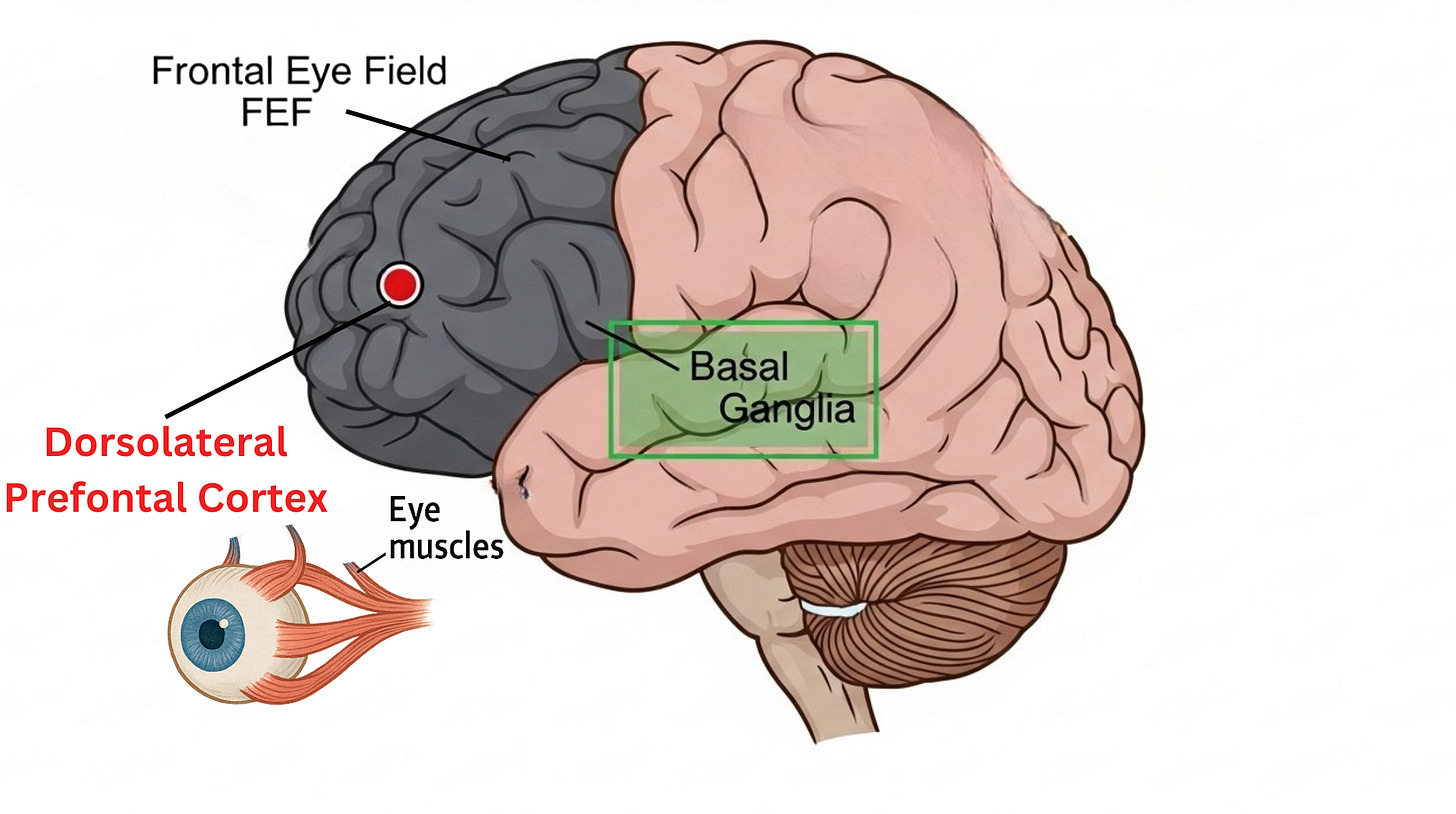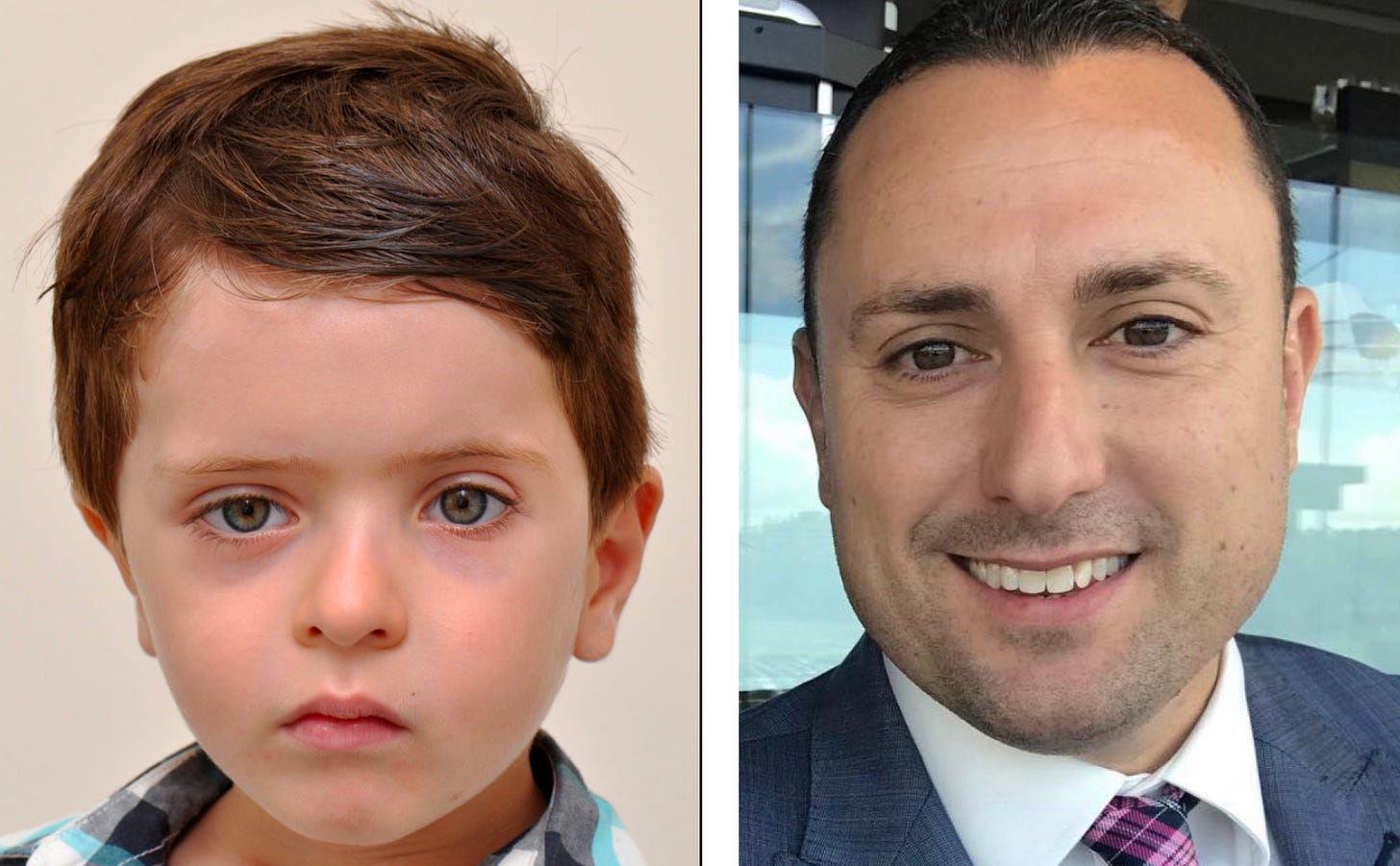What Your Eye Movements Reveal About You!
Inside, you'll get the exact neural pathways that link eye control to behavioral regulation and the 3-step protocol to reset executive function from the brain down.
› Your eyes don't just see the world—they reveal how well your brain controls behavior. And for most people, a wandering eye is the first sign that deeper regulatory systems are failing.
› The muscles that align your eyes are controlled by the same neural circuits that govern impulse control, emotional restraint, and social judgment. When one system breaks down, the others follow.
› A diverging left eye often signals right hemisphere dysfunction—the brain region responsible for empathy, consequence processing, and behavioral inhibition. A drifting right eye points to left hemisphere weakness, affecting logical planning and structured decision-making.
› This isn't cosmetic. It's neurological. The same frontal eye fields that coordinate eye movement are directly wired to your prefrontal cortex—your brain's executive control center.
› In this blog, you'll learn exactly which brain regions control eye alignment, how neural dysfunction manifests in gaze patterns, and why ignoring these signals leaves us blind to behavioral predictability. No speculation. No pop psychology. Just hard neuroscience that explains what we're really seeing.
If your brain can't align your eyes, it can't regulate your behavior either.
We tend to think of erratic behavior as purely psychological: bad choices, poor character, moral failings. But the truth is deeper and far more measurable.
The real controller behind how you act isn't willpower or values.
It's your nervous system.
And at the center of that system is your prefrontal cortex, constantly deciding whether to inhibit impulses, process consequences, or let reactive patterns take over.
Your eyes play a central role in this story. Not because they determine behavior directly, but because the neural circuits that control eye alignment are the same ones that govern behavioral regulation. When eye control fails, it's a window into compromised executive function. If the brain can't maintain the precise motor coordination needed to keep both eyes locked on target, it's simultaneously failing at the motor coordination needed for emotional and behavioral control.
Eliminate Eye Strain Forever with Science-Based Eye Training
The Science of Eye-Brain Regulation
A. Frontal Eye Fields + Prefrontal Cortex Integration
The frontal eye fields (FEF) sit within your prefrontal cortex—the brain's executive command center. This isn't coincidence. It's functional integration.
The FEF controls voluntary eye movements: tracking, focusing, shifting attention. But it's embedded within the same neural tissue that manages:
Impulse inhibition
Consequence evaluation
Social judgment
Emotional regulation
Behavioral planning
The left FEF primarily coordinates the right eye and connects to logical, structured decision-making centers. The right FEF manages the left eye and integrates with emotional processing and empathy circuits.
Studies using functional MRI show that patients with strabismus (eye misalignment) demonstrate altered activity not just in visual areas, but throughout the prefrontal cortex. The brain regions responsible for eye control and behavioral control fire together and fail together.
💡Want a quick daily reset? Check out the 5-Minute Posture Fix for a fast, effective way to improve posture from head to toe.
B. Brainstem Control Centers
Eye alignment requires precise coordination between six muscles per eye, controlled by three cranial nerves (III, IV, VI) that originate in the brainstem. This same brainstem region houses:
The reticular formation (arousal and attention regulation)
The locus coeruleus (stress response and emotional reactivity)
The periaqueductal gray (threat detection and defensive behaviors)
When brainstem control is compromised—through trauma, stress, or developmental issues—both eye alignment and behavioral regulation suffer simultaneously.
A 2019 study in Neuropsychologia found that children with convergence insufficiency (eyes that drift outward) scored significantly lower on tests of attention, impulse control, and emotional regulation. The connection isn't correlational. It's anatomical.
C. Interhemispheric Communication
Proper eye alignment requires constant communication between brain hemispheres through the corpus callosum. Each eye is controlled by both hemispheres, but with lateral dominance:
Right eye drift → Left hemisphere weakness (logical processing, verbal inhibition, structured planning)
Left eye drift → Right hemisphere dysfunction (emotional restraint, empathy, social judgment)
When interhemispheric communication breaks down, you get both gaze instability and behavioral dysregulation. The brain can't maintain the split-second coordination needed for either system.
What Goes Wrong
If your prefrontal cortex is like mission control, then your eye alignment is the first system to show mission failure.
Here's what scrambles the signal:
Unresolved Primitive Reflexes
When primitive reflexes remain unintegrated, the brainstem's motor output to facial muscles becomes imbalanced. This creates visible asymmetries - not just in eye alignment, but across the entire face. The same neural dysfunction that allows one eye to drift also disrupts coordinated muscle activation throughout facial structures. These asymmetries are direct readouts of brainstem motor control patterns.
Chronic Stress and Trauma
Prolonged stress rewires the brainstem toward hypervigilance and survival mode. This shifts neural resources away from precise motor control (like eye alignment) toward reactive, defensive patterns.
Neurodevelopmental Disruption
Anything that interferes with normal brain development, birth trauma, early illness, environmental toxins, medication, can create lasting imbalances in the neural circuits that govern both eye control and behavioral regulation.
Screen-Based Lifestyle
Constant near-focus work and reduced eye movement variety weakens the neural pathways between eye control and executive function. The brain stops practicing the coordination it needs for both visual and behavioral precision.
Over time, the brain adapts by creating protective patterns: it reduces executive control, increases reactive responses, and prioritizes immediate survival over long-term planning.
These patterns get reinforced with every unregulated impulse, every missed social cue, every consequence ignored. Eventually, you hit a point where no amount of therapy, medication, or behavioral intervention makes lasting change. Why? Because you're treating symptoms downstream, not the upstream neural dysfunction.
The Bigger Picture (what does it mean)
Your eyes broadcast your brain's regulatory capacity in real time.
A diverging gaze is a neurological flag that the circuits controlling attention, inhibition, and judgment are compromised.
Below you'll get the full breakdown of exactly what each eye drift predicts, plus the specific neural pathways involved and why these patterns are so reliable for assessment.
Left eye drift patterns:




